Man-animal conflict occurs when wild animals pose a direct threat to human livelihood and safety. Usually this leads to persecution of that species, be it tigers, leopards, elephants and even wild boars. This conflict is one of the main threats to the continued survival of many species and is also a threat to local human population. Every other day in India we hear about animals attacking humans.
Thanks to unbridled development and encroachment of once lush green spaces that were originally animal habitats, people and animals are increasingly coming into conflict over living space and food — the more the forests shrink, the more the man-animal conflict.
While a large urban population is mostly unaware about the impact of such a conflict, people who live on the fringes of forests bear the brunt. So much so that wild animals — in search of food and water — freely attack humans and their livestock on the forest fringes and newly formed areas after cutting down the greenery.

Competition for space
The conflict that occurs when growing human populations overlap with established wildlife territory thereby creating competition for space and resources. This results in a negative impact on people, animals, resources and habitats. Urbanisation and industrialisation have led to diversion of forest land to non-forest purposes even on peripheries of protected areas and green belts. This in turn results in increasing pressure on limited natural resources in the forests, says avid wildlife photographer from Mysuru M.K. Mukesh.
The national animal
Though tigers killing humans, leopards preying on livestock and elephant raiding crops are commonly discussed issues, the topic gains prominence and media attention when a tiger kills a human being or if a tiger dies due to the conflict. But the attention is minimum when a leopard or a wild elephant attacks humans.
Tiger is India’s national animal and there are many stakeholders when it comes to tigers. Thanks to strict rules and widespread conservation efforts, it creates a furore when a tiger is killed. Or even when humans are killed.
Such tigers are classified as ‘man eaters’ and either they are shot dead or captured only to be housed in a zoo. Very rarely are they released back into the forests as they have already tasted human blood and very well know that humans and livestock are easy prey.
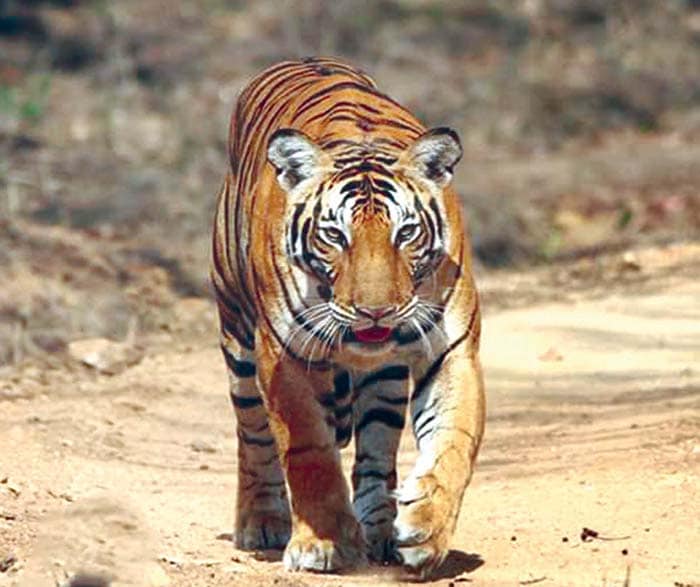
Tiger kill
A tiger kills only if it is necessary. Once it makes a kill, it consumes about 25 to 30 kilos of meat and the remaining part of the carcass is closely guarded until it is hungry again — usually after 2-3 days. Moreover, a tiger does not have any preferential taste or diet on its menu.
It is estimated that about 28 percent India’s tiger population lives outside or on the fringes of ‘real’ forest that is outside notified and protected areas. This is because the territory once they occupied and ruled is now under human habitation, thanks to encroachments.
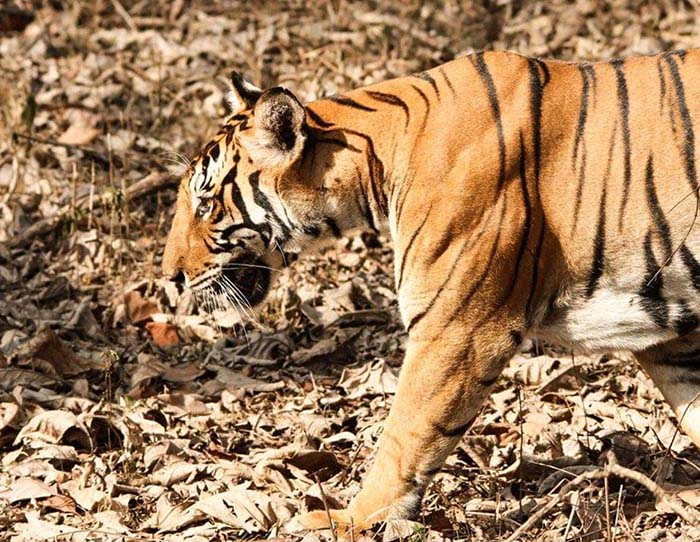
Fiercely territorial
Tiger being territorial and solitary in nature — except during mating season and their motherhood periods — roam freely
in the large expanse of their territory which may range between 5 to 10 square kilometres, scent marking and expanding the same.
They spray their urine on trees to advertise their presence in that particular territory. Simultaneously they look out for food. During hunt, a tiger might come across humans inside forests or on the fringes.
In such a situation, the hungry tiger might prey on the human. Who is at fault? Who is the intruder here? And who has to be blamed here? For reasons best known to man, the tiger always is the culprit. Of course, there are exceptional cases where a man has been killed by a tiger outside forest area bordering village. Mainly, these cases have to be debated and a suitable solution has to be found.
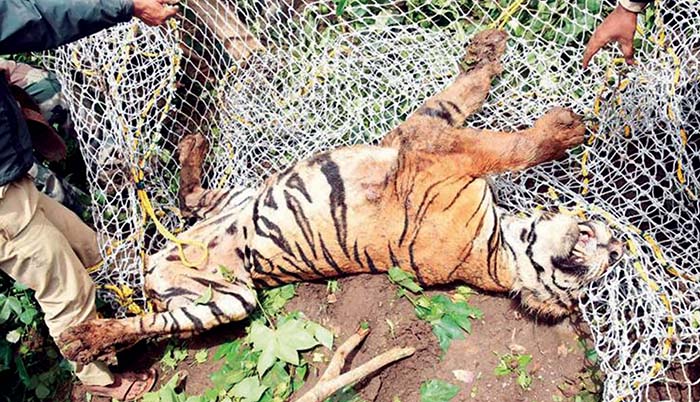
No limits for greed
Growing human population and his greed is the main reason for encroachments of forest land and its fragmentation. Every individual wishes to own a piece of land. At every such instance, the resident tiger loses a chunk of its territory.
Competition and territoriality force certain tigers to leave protected areas, especially youngsters seeking to establish their own territories and injured or old animals desperate for food.
Too much of human movement in forest land is forcing the prey base of the tiger to move away from its territory. Absence of prey animals and hunger forces the feline to equate humans with its prey. For a tiger, it is just flesh and blood — no other distinction.
Over 200 humans have been killed by tigers in India in the last 4 to 5 years. Only a science-based tiger management with a special emphasis on conservation of prey species will reduce human kills.
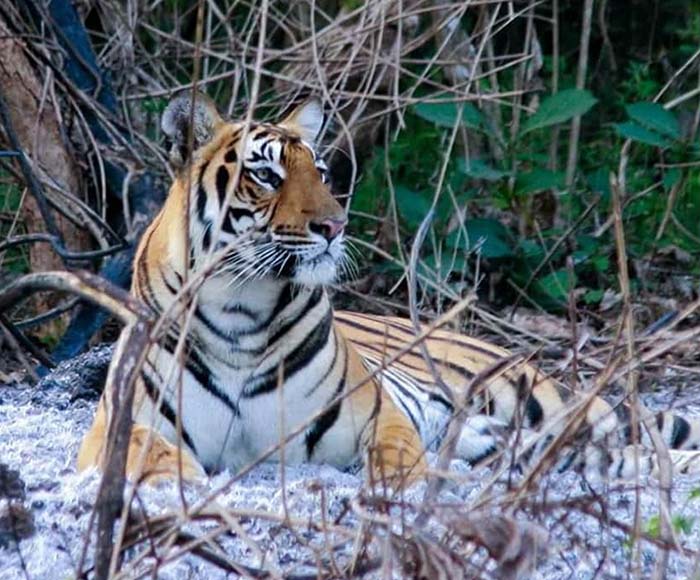
Leopards and human populace
If tigers are solitary animals, leopards are highly adaptable. They can survive by just feeding on small mammals. They try to survive close to human habitat, often without the knowledge of people living close by.
As it is more often found, leopards give birth in a sugarcane field because it provides a safe shield for cubs. During harvest season, people find such vulnerable cubs. The mother would have ventured out in search of food.
But the common notion is that the mother leopard has abandoned her cubs. This is not true. Animals take good care of their offspring. The leopard is sure to return to her cubs. But there are many instances of people killing lactating leopards, leaving her cubs vulnerable. Most of the times cubs will not survive without their mother.
A leopard cannot differentiate between a farmland and a forest land. We humans should adopt ‘live and let live’ policy. Leopards often look for easy prey. Their eyesight being extremely good at night. They feed on dogs or livestock in human habitat. They may even attack a child or even an adult.
Snare menace
Normally people lay a snare or a jaw trap to capture the feline. They might even poison half eaten carcass expecting the leopard to come back to finish off the incomplete meal. This way, Mother Nature loses one of its precious creatures to man’s greed but no tears are shed.
There are many leopard sightings in the vicinity of Chamundi Hill, Lingambudhi Lake and in Vijayanagar surroundings. But not a single case of attack on humans is reported. This proves that leopards only feed on easy prey that are available near human settlements. They do not attack humans.
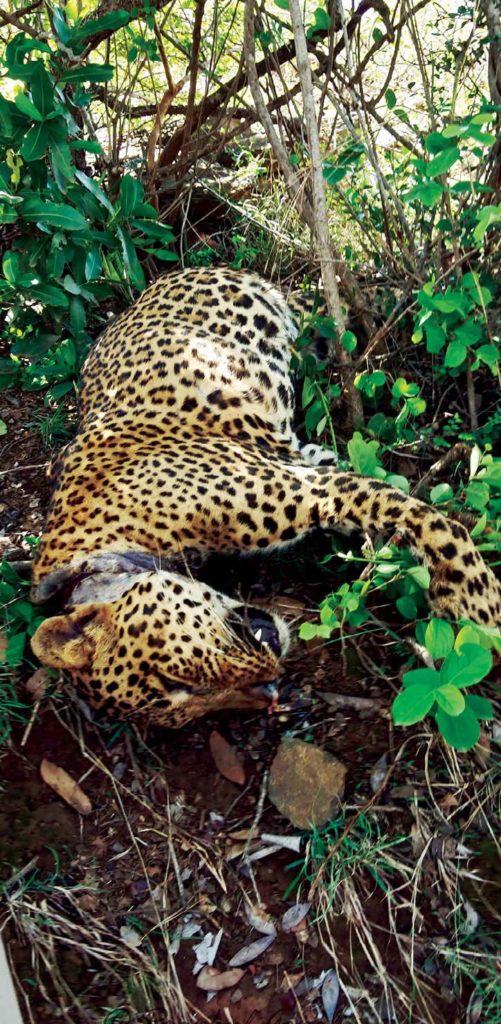
Gentle giants
Among the animals that are persecuted in the name of saving human population are the elephants — the most revered, respected and equally feared animal. Even elephants do not attack humans unless provoked.
Their eyesight is poor and even in daylight they cannot clearly see beyond 200 feet. Their night vision is much poorer. But they cannot be underestimated as their sense of smell and hearing are too good. They have excellent memory and they rely on these strengths for survival.
An adult elephant consumes about 180 kilos of fodder and about 75 litres of water every day. For this, they need to feed for almost 18 hours and this keeps them moving for long distances.
Even elephants cannot differentiate between a farmland and a forest land. They enter a farmland by chance and not by choice. They do not have a preferential vegetation on their menu. They keep grazing whatever comes on their way.
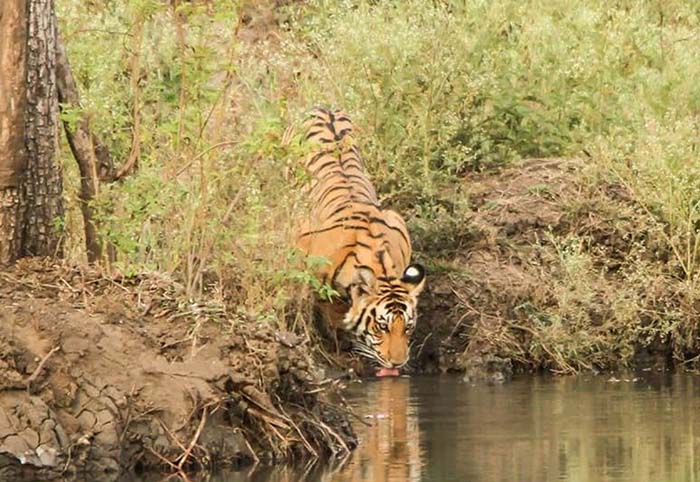
Preventing a conflict
Mitigating or eliminating man-animal conflict needs a lot of efforts. The Governments and its allied departments like Forest and Revenue must improve animal habitat to augment food and water availability. This will, to a great extent, minimise animal movement from forests to human habitations.
This apart, it is essential to train local Police officers and people and this can be done by the Forest Department by framing guidelines for management of human-animal conflict and publish the same in the local community.
Thirdly, sensitisation of people about the DOs and DON’Ts will help. The trainers can create awareness on animal movement, animal corridor, and animal behaviour during feeding season, and also breeding season. People must also be trained on animal behaviour during the presence of their young ones.
Funding and research
Governments must step in to construct boundary walls and solar fences around the sensitive areas to prevent wild animal attacks. In many cases, these measures have failed, thanks to corruption, lack of political will and of course, bureaucratic lethargy.
Simultaneously, Governments and Universities must encourage and support involvement of research and academic institutions and leading voluntary organisations having expertise in managing human-wildlife conflict situations.
Preventing elephant raids
To ward off wild elephants from farmlands, these are a few things that we can do.
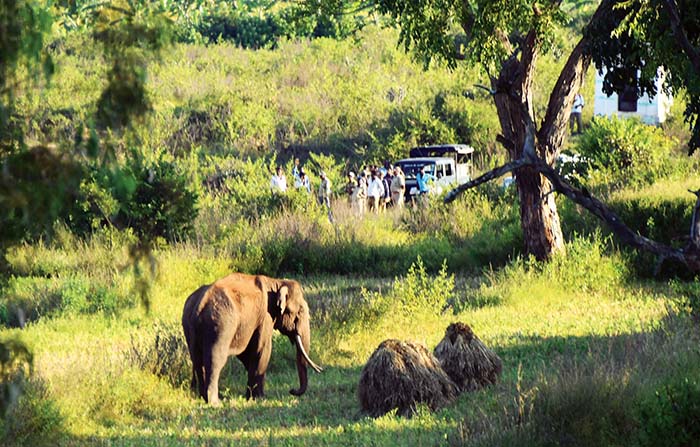
- Digging wide and deep trenches around boundaries of forestland and maintain them, not to allow vegetation to re-grow and prevent mud deposits inside the trenches.
- Installing electric fence with a low voltage. Low enough to scare the elephants as they are too sensitive to electricity. High voltage fences often kill elephants.
- Spraying water mixed with chilli powder or pepper powder on crops that are prone to elephant attacks. This irritates elephants forcing them to retreat. Elephants have keen sense of smell.
- Rearing honeybees — apiculture — on the boundaries of farmlands. The humming sound of bees frightens elephants and they retreat. This way, farmers can get additional income by selling honey.
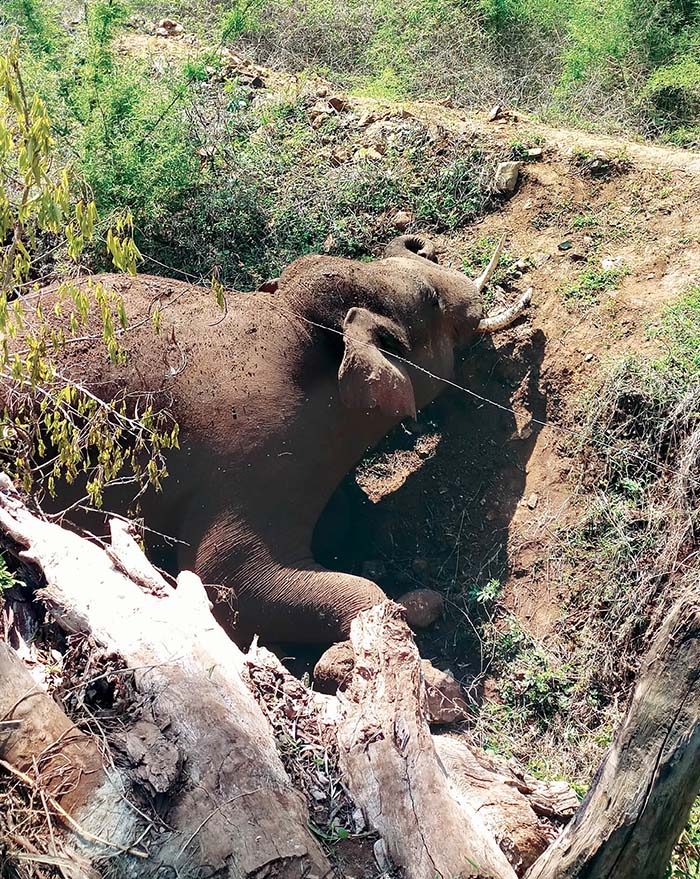
By M.K. Mukesh
[Photo courtesy: Praful Gopal, Guruprasad Thumbsoge]



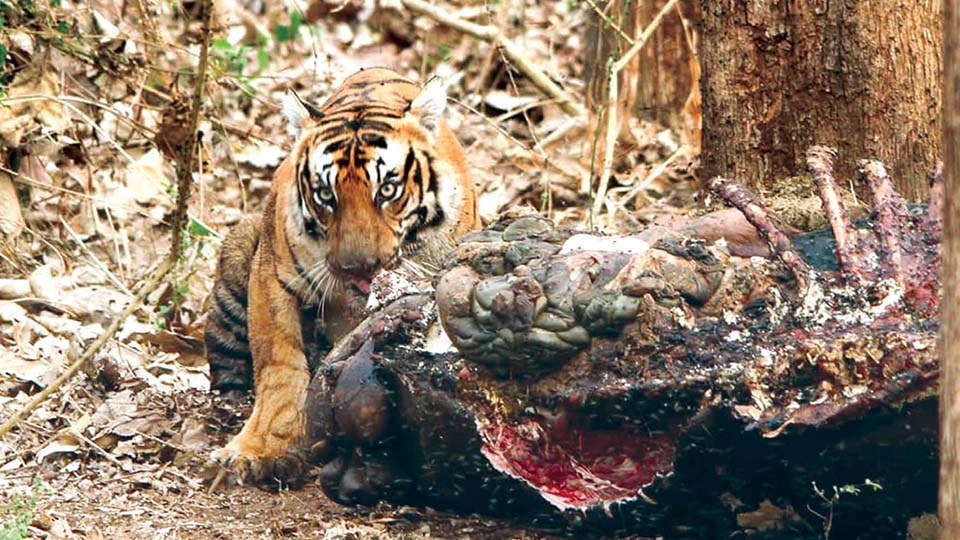




Enjoyed the article! I think Lady Curzon was the first, in 1904, to push for a wildlife reserve in Kaziranga, to protect the one horned rhino. Then, in the 1930s, the great Jim Corbett helped to establish a reserve for tigers and other wildlife in Uttarakhand. After independence, the only prime minister who has shown a feeling for India’s wild spaces and fauna and flora and a passion to protect them was Indira Gandhi. Her political sins were many (including establishing the incorrigible gandhi dynasty and promulgating the inexcusable emergency and making corruption endemic) but there is no doubt that she had a deep love for nature and a passion to protect the environment. She was responsible for all our significant environmental legislation, including The Wildlife Protection Act (1972), The forest conservation Act (1980), and Acts to protect our Water (1974) and Air (1981). Unlike her father, she also opposed some large dam projects because of their environmental consequences ( like the Tehri dam and a hydroelectric project in Idukki), and protected the North East and our wonderful Western Ghats. What a contrast with the present incumbent who has photo-ops with peacocks and Bear Grylls and dilutes our environmental laws whenever they disturb his moneybag cronies.
@Pai
I understand your passion. But, India is at a stage where there is a severe conflict between people and nature , in which the higher order humans take priority. There is no other alternative. That is the unfortunate result of the population explosion. Politicians in power are powerless in this situation, where there is huge demand for spaces and resources. Hence, I often disagree with the worthless pronouncements of likes of MGP, who howl about climate change, preservation of nature etc..but the members there, comparatively recent Mysoreans, themselves benefit from the occupation of the space ( their houses/offices) where not long ago, a forest stood, and a leopard freely roamed.
I agree with the observation : “The conflict that occurs when growing human populations overlap with established wildlife territory thereby creating competition for space and resources. This results in a negative impact on people, animals, resources and habitats. Urbanisation and industrialisation have led to diversion of forest land to non-forest purposes even on peripheries of protected areas and green belts”
I was born, raised , educated and ,later worked for a decade in Mysuru. The Mysuru of 1950s was a very compact city surrounded by lush forest, inhabited by wild animals. One could walk on the footpath and even the limits of Yadavagiri then could be reached by a bicycle. There were clear seasons-Winter in particular, which was comfortably cold. The population of India then, just a decade after independence was 300+ million.
The population of India, just a decade later, was increasing at a very fast rate, and for the first time, a frequent visitor from Australia who spent some time in Mysuru each year to enjoy his visits to the nearby forests, see the elephants roaming at will , spotting a leopard now and then, and general happy with the time he spent in this city, shunned the City ,horrified by houses and extension replacing the forest, Mysuru getting names of extensions which he and us could only look at horrified. Also, looking at the City getting hundreds of 2-wheelers and 4-wheelers, experiencing massive cases of asthma and chest infections for the first time in tthe City’s history,, this Australian avowed never to return, by repeating the observation of a journalist that India was adding one Australia every other year. That was 50 years ago!
In 1950s,our milk man-a full-time primary school teacher, who in his spare time supplied milk from his crowd of cows, in 1960s first complained about spotting a large animal attack one of his precious cows, mauling it badly, at the early hours of one morning.. He lived not far from us, not far from the centre of the City,.This animal later was identified as a medium sized tiger which later for a long time became a menace to people and cattle in our area.
Indira Gandhi today, would be horrified to see how her Acts, are rendered useless by the population explosion, adding one Australia, every 6 months since her time in power. I often criticise PM Modi, but he is helpless in the situation of dire need for spaces and resources for humans.
Seeing the damage that increased population has inflicted on Mysuru, 3 decades ago, I stopped visiting India and Mysuru, my native city, in order that I preserve the precious memory of my beloved Mysruru of 1950s.
Hello Pai
1904 is more than a century ago” India’s population then would have been a mere fraction f what it is now.
The necessity for water for irrigation and hydroelectric generation -like the state the then Mysore state was in Sir Seshadri Iyer’s and Sir MV’s times, in 1950s meant the building of for example the Bhakra Nangal dam, and Nagrajuna Sagar dam, whose purpose was also to utilise the monsoon vagary of river spates for beneficial purpose. From your comment, I gather, you have not visited these dams, and understood from the first hand impression the results of their construction. Nehru, who was a visionary understood the problems ahead of independent India-the need to produce food and to power industries. India’s population was increasing at that time. Indira Gandhi too would have done the same. Her Acts were to consolidate the gains and to constrain the excesses. These Acts could not stand the test of time as India’s population accelerated very fast. For every problem or issue you may like to highlight, there will be only one reason: in Clinton’s modified words: ” It is the population stupid!
When the nature preservation warriors are welcoming Joe Biden’s election and expecting him to focus on climate change, at some pin in time Biden has to eat his words: He has promised more Mexican immigration, offering permanent residency for undocumented workers, Indian im migrants and more immigrants from India etc.. etc.. Kamala Harris, his deputy wants also to focus on climate change. The US with its intercity highways, lack of massive public transport structure means, even if all cars and other vehicles are to progressively driven by electricity, there will be a massive demand for electricity which should have high availability. It has no major nuclear power plants. Its alternative energy sources are very limited, and not developed except a few examples of wind and solar power. Biden has also promised to bring back manufacturing, which has gone to China. Add all the above, I can see why Biden and Harris will fail.
New Zealand-the Kiwi Land, arguably is the country where one can see the nature at its glory. The current Labor government headed by Jacinda Arden is grappling with the demands of spaces and resources , as the above articles has focused on, as she needs to industrialise her country more, needing hence more immigrants , and one could easily see where NZ will be in 5 decades!
Hare Krishna! And Babushka! Enjoy your trenchant observations. I find many intelligent, thoughtful and articulate old Mysoreans on these threads. Wish someone would record their oral histories, so that one could recreate the ethos of Mysore in the 1940s, 50s and 60s.
As for your comments on my utopian rants, I cannot quibble with them! Though I would venture to suggest that it is a matter of not just the population level, but consumption patterns that create unsustainable situations. A world without the US and it’s mode of living could support far more people, flora and fauna. “There is enough for every need,but not for every greed” is at least a partial truth! I myself try to do my bit by living a Spartan lifestyle. But living a simple life is easy when one has a nest egg of resources in a safe harbour. It is difficult when one is insecure, an insight I got from Samuel Johnson’s observations on charity in Boswell’s ” Life of Johnson.” The last mile in the march to living sustainably is not just living simply, but changing one’s grasping mindset and reducing the level of one’s possessions as in the famous lines from the Sermon on the mount (” Behold the lilies of the field….Enough unto the day is the evil thereof.”).
I also think you made a very good point about people like me being armchair environmentalists because we have no “skin in the game.” We helicopter to Shangri Las like Mysore, having made a pile elsewhere (though I do not belong to this group, having given away most of what little I made elsewhere to charity and by then attempting to survive “off the land”) and then dispense environmental wisdom, without having to “live off the land” (tourism, industry, service industries etc) as it were. Environmentalism learnt at the grassroots is more compelling, since such people, while having to live off the land, realize the wisdom of having sustainable solutions. That said, talk shops and armchair activists probably do have a role, especially if they have links to grass roots organizations. They can be a force for change, though behind the scenes.
Enough of my rant. Your thoughts.
Interesting discussions.
As for as I am concerned, my main message, when discussing Nature and its conservation in the Indian context, is to keep in mind , the elephant in the room-the massive population growth since 1960s, as the 2 posters so well articulated. Hence, I find it very interesting and relevant the anecdote relating to the Australian who loved to visit the Mysuru of those days. It is also relevant to mention here, the very strict Australian immigration system, which Indians attempt to breach using the guise of entry to universities there-although India has better universities, in order to preserve what is left of their natural wealth: the bush and forests at the perimeter of that big Island, having sacrified their beautiful coral wealth in the Great Barrier Reef..
I am sorry to say that Indians who are born after 1950s, generally are not concerned about the immense growth in the country;s population, and the destruction for ever the gifts of nature. In India , I see no struggle to contain the need of spaces and resources, because of the massive increase the local population. Massive population growth ends in the need of huge job creation plans based on so called technological advancement, often disguised as such, to enable the individuals who run enterprises for their own wealth creation; the need of new infrastructures, as one can see in the large deforestation in Mysuru, the so called heritage city, making it a ‘greater Mysuru’. The politicians in power , particularly in Karnataka, have no hesitation to donate vast swathes of land, for the purpose, as they know, the wealth created finds its way to them!
Elsewhere, countries are struggling against the politically driven powers such as the UN, who do not want to even admonish many third world countries like India, to plan to slow down the population through education, but come down heavily on Wester countries to allow the massive influx of immigrants from the third world which has not stopped their production of humans.
I fully agree with the observation that Nehru foresaw huge population increase in India, the need for food and electric power in the modern independent India. I was one of those who was lucky along with my mates in our final year degree course in engineer, to have met and listened to him, explaining the needs of independent India in coming decades. He knew we were visiting the Bhakra Dam and its massive hydroelectric power plant. We learned at the first hand , why this dam which even before independence was planned by the British, to control the floods in the Sutlej river and direct the water to irrigate vast acres of land, just as the case of the KRS dam for the then arid acres of land in Mandya district. Punjab as a result was able to contribute massively the food for the nation. I do not blame Nehru for the construction of dams, although , I may for other things.
While we were on the way to Delhi , taking a bus route through Madhya Pradesh, we stopped in the middle of decoits- infested Chambal region, to savour the atmosphere of that rich valley, which we thought maybe the thing of the past in the coming decades.
I understand the passion of a, individual conservationist in India today, who is a very rare breed indeed. But I question the probity of organisations created to expose the causes for nature preservation, climate change change issues, completely ignoring the big elephant in the room I mentioned-the population explosion, and the pressure on spaces and resources. Whatever is wrong with the PM Modi, he cannot enact more legislation to preserve nature, given the above pressure. India has reached a state of no return to manageable population numbers of 1950s.
I have stood on the mount where Jesus Christ reported stood, when he delivered his Sermon, and have looked at the beautiful valley below. This Valley situated near Galilee, a Palestinian -managed territory, is under space pressure, as the Palestinians multiply themselves in numbers to over run the Jewish population to claim their so called land. I can hear loud protests for this observation. They have already destroyed the beautiful town of Bethlehem. They know the UN supports them fully, as do India for example!
BTW, Samuel Johnson is always referred to as Dr Johnson, to emphasise his erudition. Boswell a Scot, did not agree with Dr Johnson always, but admired the great man’s charitable deeds. Though struggled for money, Dr Johnson, helped the likes of Oliver Goldsmith, an Irish Londoner, who struggled to make both ends meet, by using his massive influence to get advance for Goldsmith works like : the Vicar of Wakefield and She Stoops to Conquer”, Though a Londoner ( he oft repeated words:” When a man is tired of London , he is tired of life”) he liked the Nature in all its glory, which was evident in his visit to Scotland with Boswell. But, his country is struggling to contain the massive immigrants arriving almost every day.
Apologies, many typos
@Pai
I appreciate your passion for the environment. My criticism, not directed against any individual, but to those environmental pressure groups, is their total disregard of the most important fact in the lax of environment control in India, the fast increase in the population growth, the churning out of millions of future Indians every year. In this situation, however one passionately argues about the environment, the stage has reached in India , where such concerns fail to resonate. The priori requirement for nature conservation is a long pause in population, native growth or massive immigrants influx or both. India’s galloping population growth has not only presented environment issues in India, but also a a variety of issues to other developed countries, in recent years to New Zealand which is grappling with a increasing number of illegal Indian immigrants, who originally entered the country in the pretext of studying in their universities- much lower rated than those good ones in India, and the human rights laws means accommodating them for months or years until their cases are heard and sorted out either accepting some of them or deporting all of them. New Zealanders fear that their vast rich rural areas with wonderful hills and streams, which became the model of Tolkien’s ‘middle earth’ in his The Lord of the Rings movies, may have to make way for housing developments, if such massive influx of humans arrive and refuse to leave. I am excluding China, but the difference is China invests in countries such as the New Zealand.
Indians are more tolerant about deforestation and environment pollution, citing technological development to empower the country. Addressing, recently, a tech conference in Bengaluru, he said: ” Technology has become a way of life for Indians’, not bothering about the degree of environment pollution that Bengaluru experiences-not on the ground alone, but on the Sky, not excluding the noise pollution. Where as in the West, people hesitate to buy newer models of iPhones, when their current old ones are adequate for the purpose, in India newer models of iPhones, like the models of Mercedes or Audi , are prestige symbols to boast about.
When population reaches the saturation limit and beyond, human lives becomes cheap. In late 1950s, when HH Jayachamaraja Wadiyar’s speeding Silver Rolls Royce accidentally hit an young girl , avoiding an animal, on the way to Chamundi Hill, HH Wadiyar was very distressed,met the girl’s parents and apologised,paid for her medical treatment-fortunately there was just an ankle injury, and this was the main Mysuru news for days. Such accidents even resulting fatalities these days is considered as a routine mishap for the society, when there are so many people in the city and hence so many road accidents involving 4-whhelers.
Hello Pai
Not trying to be rude, what did otherwise you expect in India, particularly in Mysuru in 2000+ Circa I am assuming that you are one of those idealistic environmentalist, not originally a native of Mysuru, who arrived in the City after living perhaps in the US for years; a simple Googled research would have dispelled any myth about Mysuru being an environmentally place. Mysuru has changed for the worse, loves cars and large shopping malls, likes lanes of intercity highways ,wants its airport expansion to accommodate wide-bodied jet aircraft, and now MUDA is planning match box type high rise buildings to house pigeons-sorry people! Even a Mid-Western city like Cleveland has a relatively better conservationist approach. While the US with many time zones, has only 300 million inhabitants, India has 1.3 billion humans in a smaller land mass. Nostalgia does not help though. Even in early 1970s, an ardent environmentalist, a Mysuru native, after living for decades in US, arrived back to live in Nanjagud, bought a small farm and a house to be close to earth. Sure, in 2 years, after many bouts of delusions, he simply sold the prroperty at a loss, went back to US.
The lesson: Nostalgia, is merely that!